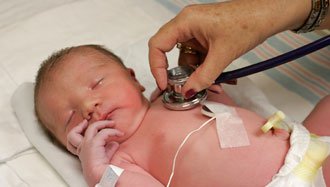Diagnostic imaging of pulmonary tuberculosis
The article was written by Specialist Doctor Nguyen Dinh Hung - Radiologist, Department of Diagnostic Imaging - Vinmec Hai Phong International General Hospital.
Mycobacterium tuberculosis is the cause of tuberculosis. When a person with pulmonary tuberculosis coughs, sneezes, or spits, the person in close contact accidentally inhales and causes disease in the lungs. From the lungs, TB bacteria can travel through the blood or lymph to other organs in the body and cause disease there.
1. Diagnostic imaging of pulmonary tuberculosis
Diagnostic imaging used in the diagnosis of pulmonary TB is usually chest X-ray and CT of the lungs, which may include contrast injection, no contrast injection, or high-resolution imaging.
Image of lesions depending on the type of tuberculosis or the advanced stage of tuberculosis, but there are different images of lesions on the film.
1.1 Primary TB (Primary TB) Primary TB is a disease in children, especially children 1-5 years old, a rare disease in adults. 60% of children with primary tuberculosis have enlarged lymph nodes in the hilum. 40% have lymph nodes around the trachea, 80% have lymph nodes below Carina. Occasionally, pulmonary consolidation in one lobe or segment (due to lymph node compression) or pleural effusion may be seen. CT scan: Confirm the presence of lymph nodes around the central airway.

X quang phổi giúp chẩn đoán lao phổi
1.2 Secondary TB (Pulmonary TB after primary infection) Millet TB: Small opacities, 1-2mm in size, evenly distributed throughout both lungs, but predominate in the upper 1⁄2. Early infiltrative pulmonary tuberculosis: The lesion is a cloud of indistinct, interstitial or circular opacities ~1-2cm in diameter in the subclavian region. These lesions change rapidly. If diagnosed and treated well, it will disappear, if not treated, it will become a cavernous lesion. Chronic pulmonary TB: Nodular TB, Tuberculosis (Tuberculosis), Cavernous TB, Fibrous TB.
2. Who is assigned to take x-ray to diagnose pulmonary tuberculosis?
Patients with symptoms of suspected pulmonary tuberculosis are indicated for chest x-ray to combine with other examinations to help diagnose. Symptoms include:
Cough that persists for more than 3 weeks (dry cough, productive cough, hemoptysis) is the most important symptom associated with tuberculosis Chest pain, sometimes shortness of breath Feeling tired all the time Night sweats Slight fever, chills in the afternoon Anorexia, weight loss.
3. What does the diagnosis of pulmonary tuberculosis mean?
The results of the diagnosis of pulmonary tuberculosis help determine:
Is the patient sure to have pulmonary TB? Limit the possibility of spreading when not treated according to the TB regimen Oriented for the diagnosis of extrapulmonary TB when symptomatic Stage, disease form Evaluation during and after treatment Evaluation of sequelae when cured.
Để đặt lịch khám tại viện, Quý khách vui lòng bấm số HOTLINE hoặc đặt lịch trực tiếp TẠI ĐÂY. Tải và đặt lịch khám tự động trên ứng dụng MyVinmec để quản lý, theo dõi lịch và đặt hẹn mọi lúc mọi nơi ngay trên ứng dụng.
SEE MORE
What is the difference between lymph node tuberculosis and pulmonary tuberculosis? How do I know if I have tuberculosis? Tuberculosis is not contagious
Bài viết này được viết cho người đọc tại Sài Gòn, Hà Nội, Hồ Chí Minh, Phú Quốc, Nha Trang, Hạ Long, Hải Phòng, Đà Nẵng.






